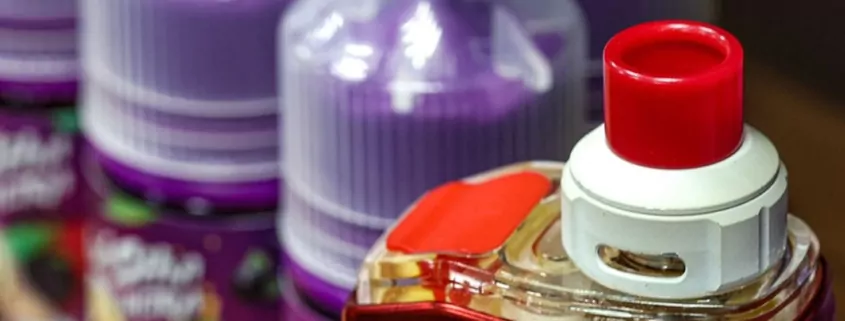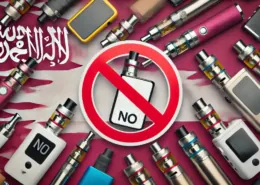Russia’s Vape Market: Inside the Battle for Control
The landscape of nicotine consumption in Russia has been dramatically reshaped by the explosive growth of electronic cigarettes. According to data from VCIOM (Russian Public Opinion Research Center) and Rosstat, the number of e-cigarette users in Russia has surged to 10.5 million people, a staggering 46-fold increase over just five years. This rapid rise, particularly among young people, has prompted Russian authorities to pursue a series of legislative measures aimed at controlling the so-called “elektronki” and vapes. However, despite these efforts, the number of vape shops continues to grow, and the market, both legal and illicit, thrives. This has led to an intense debate among lawmakers, public health officials, and industry stakeholders about the most effective path forward: stricter regulation or a complete ban?
Current Regulations: Marking, Hiding, and Taxing
In recent years, the Russian government has implemented several key measures to rein in the vape market:
- Digital Marking (“Chestny Znak”): Introduced in late 2022, this system requires digital marking for all e-cigarettes and their liquids. The primary goal is to “whiten” the industry by tracking products from manufacturer to consumer, thereby reducing counterfeit and contraband nicotine. According to the Center for the Development of Advanced Technologies (CRPT), the operator of the system, the number of legal points of sale nearly doubled following the implementation of this requirement.
- Sales and Display Restrictions (April 2023 Law): A significant law passed in April 2023 introduced several key restrictions:
- A complete ban on the sale of all vapes, including nicotine-free versions, to minors (under 18).
- A prohibition on advertising and demonstrating the consumption of these products.
- A ban on the open display of vaping products in retail stores, requiring them to be hidden from public view.
- The establishment of a minimum price for nicotine-containing products, set by the government, to prevent them from being sold too cheaply.
- Excise Tax Increases: The government has used fiscal policy as a tool for control. Excise taxes on vaping products were doubled in 2024. From March 2025, the definition of nicotine-containing products was expanded to include nicotine-free, non-tobacco heating mixtures, bringing them under the excise tax umbrella. The Ministry of Finance estimates that the excise tax on nicotine raw materials and non-tobacco nicotine-containing mixtures, introduced from March 1, 2025, will bring an additional 156 billion rubles to the state budget over the next two years.
Violating the digital marking rules carries severe penalties under Article 15.12 of the Code of Administrative Offenses, including fines starting from 300,000 rubles for legal entities. For large-scale or conspiracy-related offenses, penalties can escalate to fines of 400,000 to 800,000 rubles or imprisonment for up to six years with an additional fine of up to 1 million rubles.
The Push for a Full Ban: A Stalled Initiative
Despite these regulations, many lawmakers believe they are not enough. In May 2024, a group of deputies led by Yaroslav Nilov, chairman of the State Duma Committee on Labor, Social Policy and Veterans’ Affairs, introduced a bill calling for a complete ban on the sale of all electronic cigarettes. The explanatory note to the bill stated, “Despite the fact that certain prohibitions on the sale of electronic cigarettes have been established, they are easily circumvented and they continue to be sold to minors… In the interests of preserving the nation, we believe it is necessary to establish a complete ban on the sale of vapes at the federal level.”
However, this radical proposal has not yet reached its first reading in the State Duma. While some parliamentary committees, like those for youth policy and family protection, welcomed the bill in principle, they also requested terminological clarifications and further refinement. The legal department of the State Duma pointed out that the proposed changes would contradict existing parts of federal law that permit the trade of these products, albeit with restrictions. The bill appears to be on pause.
The Search for Balance: Health vs. Economics and Lobbying
The hesitation to move forward with a full ban highlights a classic regulatory dilemma: balancing public health interests with economic realities and industry influence. Yaroslav Nilov acknowledged this complex dynamic, stating, “The government and the State Duma are in a state of discussion, developing a consolidated solution that takes into account a large number of interested parties.”
On one side, the Ministry of Health argues that vaping is harmful and reduces life expectancy. On the other, those responsible for economy and finance point out that these are excisable goods that generate significant budget revenue. They also raise concerns that a total ban could lead to a surge in contraband, although Nilov notes that the market is already flooded with counterfeit products, meaning harm is being done to both public health and the economy.
Nilov also pointed to the power of industry lobbying, which includes importers, manufacturers, retailers, and sometimes even local officials who may turn a blind eye to violations for financial reasons. “In some small localities, they turn a blind eye to violations, there is a cover-up, because it’s money,” he said.
New Proposals: Tackling Youth Appeal and Improving Warnings
While the full ban remains on hold, other lawmakers are proposing alternative measures to reduce the attractiveness of vapes, particularly to youth.
- Plain Packaging: Ksenia Goryacheva, a State Duma deputy from the “New People” faction, has proposed requiring manufacturers to use plain, unattractive packaging of a single color. “When vape packaging looks like a lollipop from childhood, we are dealing not just with the sale of a product, but with targeted advertising to children,” she commented. She also supports the idea of a “smoke-free generation” law, which would gradually ban the sale of nicotine products to people born after 2009.
- Stricter Warning Labels: Artem Metelev, chairman of the State Duma Committee on Youth Policy, has requested that Rosstandart (the Federal Agency for Technical Regulating and Metrology) consider amending the GOST standards for nicotine-containing liquids. He proposes obliging manufacturers to place prominent warning labels about the harm of consumption on vape packaging, similar to the requirements for traditional cigarettes.
- Flavor Ban: A group of deputies from the LDPR party, led by Leonid Slutsky, has introduced a bill to ban the use of “substances aimed at increasing the attractiveness of such products, including food flavorings and/or additives that enhance nicotine addiction.” Slutsky argues that while a full ban is the ultimate goal, prohibiting the candy, fruit, and mint flavors that attract young people is a crucial interim step. “If we remove these aromatic baits, the majority will turn away from this fashionable, innovative pastime,” he stated.
The Thriving Business of Vaping
While lawmakers debate, the vape business continues to flourish. The internet is filled with listings for the sale of established vape shops, complete with customer bases, supply chains, and advertising setups. The appeal for entrepreneurs is clear: low rental costs for small shops, a long shelf life for products, and high profit margins. For example, an e-cigarette with an average retail price of 1,400 rubles can have a wholesale price of less than 800 rubles when purchased in bulk.
Yaroslav Nilov laments this situation, noting that while dozens of countries have banned e-cigarette sales, and even China (the main supplier to Russia) has strict domestic market controls, Russia is at risk of becoming a “vape flea market.” He also highlights the lack of oversight on the disposal of these devices, which contain environmentally harmful batteries.
However, there are some isolated success stories of local enforcement. In the Vologda region, authorities reportedly managed to close 32 retail outlets selling nicotine-containing products in just two weeks in June, representing 10% of the total in the region. This demonstrates that targeted local action can be effective, but a comprehensive national solution remains elusive.
Conclusion: A Vaporous Future for Russian Regulation
Russia finds itself in a precarious position, grappling with a public health issue that has grown at an exponential rate. The current regulatory framework, combining digital marking, sales restrictions, and excise taxes, has not been sufficient to stem the tide of youth vaping or the proliferation of both legal and illegal products. While there is strong sentiment among some lawmakers for a complete prohibition, the significant tax revenues generated by the industry and the potential for an even larger black market create powerful counterarguments.
The path forward appears to be one of incremental tightening. Proposals for plain packaging, stricter warning labels, and a ban on appealing flavors are likely to gain more traction as a compromise. However, the core challenge remains: how to effectively regulate an industry that is highly profitable, technologically adaptive, and deeply appealing to the nation’s youth. Without a clear, consolidated, and rigorously enforced national strategy, Russia risks losing the “war” against this new form of nicotine addiction, even as it wins minor legislative battles.
- Russia’s Vape Market: Inside the Battle for Control - August 8, 2025
- Brazil: Paraná Bill to Add Vaping to “No Smoking” Signs - August 8, 2025
- Celebrate with EightVape: 10 Lucky Winners Get Free Orders or $100 Gift Cards - August 8, 2025








